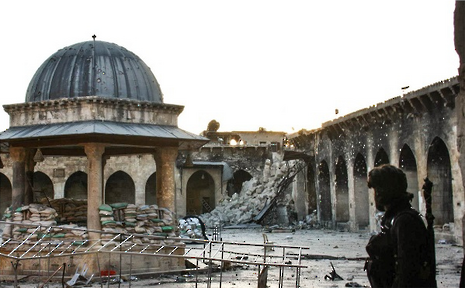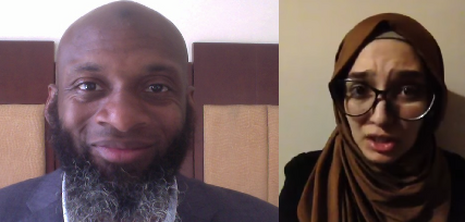In Syria, fake news goes a lot further than you thought
The regime’s record doesn’t mean we should trust everything rebels say

In Syria, objective truth always seems one step away. Last week, the Syrian Arab Army (SAA) finally retook control over the eastern part of Aleppo, with over 98 per cent of the city now under Syrian government control. Disturbingly, reports have emerged of massacres of civilians around the city, with the United Nations citing multiple sources in claiming a death toll of at least 82 non-combatants from last week on Monday night. Some are even calling this alleged wave of violence a ‘genocide’ – remarks which come in the context of years of the ‘disappearing’ of opposition activists by the regime.
However, pro-government sources deny the allegations of genocide, with Russian officials dismissing what they call ‘blatant lies’. So what is really happening in Aleppo?
Aleppo was one of the earliest sites of fighting in Syria, having been conquered by the Free Syrian Army (FSA) and other Islamist fighters in 2012 and 2013. By 2016, control had mostly shifted into the hands of Jabhat Fateh al-Sham (JFS), the internationally recognized terrorist organisation formed by Al Qaeda and other Islamist extremists.
For years now, JFS and other Islamist groups have engaged in the abducting, torture, and arbitrary killing of journalists. Theo Padnos was one of the few American journalists to be kidnapped and survive. Held by the Nusra Front (which would later rebrand itself as JFS) he was taken to Aleppo and suffered brutal torture at the hands of the Islamist group. He subsequently wrote that when he cried in pain, his captors would mock him, saying: “Ooo, helb me! Ooh my God, helb me!”
“Syrian opposition organisations cannot be trusted not to kidnap or behead reporters”
Morning Star
As this shows, the risk of arbitrary torture and execution by the rebels is so great that objective reporting from Aleppo has been all but impossible, making quality journalism exceedingly difficult. Left-wing newspaper Morning Star summed the situation up thus: “There are no journalists in East Aleppo for the simple reason that Syrian opposition organisations cannot be trusted not to kidnap or behead reporters. As a result, many newspapers are taking at face value statements from the very groups they cannot trust with the lives of their journalists.”
Western media outlets must therefore rely on Twitter commentators like Lina Shamy, or ‘independent journalists’ such as Bilal Abdul Kareem. Both of these figures make frequent appearances in the media as ‘trusted sources’, yet too rarely do we question their claims to objectivity.
Shamy appears frequently on the BBC and for other outlets. Along with many others in rebel-held East Aleppo, she recorded a dramatic ‘last message’ as government forces closed in last week; an article in the BBC gave coverage. Her desperate plea for help mentioned an “impending genocide”. She concluded by imploring the world to “save Aleppo – save humanity”.

However, like all other commentators mentioned in the BBC article, Shamy appears to be alive and well despite her previous claims of facing impending doom. As with the others, the ‘ongoing genocide’, as many are calling it, has done little to stave off her usage of social media, through which she is now ranting against Iranians.
Furthermore, Shamy’s own social media history yields disturbing insights. One year ago, she updated her cover photo on Facebook in adulation of the recently deceased Zahran Alloush, leader of the Jaysh al-Islam terrorist group. Alloush had publicly called for the genocide of Alawites, and his group has caused extensive civilian casualties.
One questions why mainstream media outlets like the BBC are relying on characters like Shamy for reporting on the situation in Aleppo, given her apparent support for genocidal terrorists.

Despite frequently appearing on CNN, the case of Bilal Abdul Kareem – another genocide claimer – is worse still. His personal website, where he openly supports terrorist groups such as the previously mentioned Nusra Front, has enough, in my opinion, to justify banning him from just about any country on security grounds. His claim to be an ‘independent journalist’, despite the fact that other journalists have been abducted, tortured, and murdered by the very groups he is embedded with, is seriously questionable.
“Past transgressions do not give us or our media a ‘pass’ to avoid fact-checking allegations”
Last Saturday, an article appeared in The Independent entitled: “There’s more propaganda than news coming out of Aleppo this week”. I would contend that it hasn’t just been this week, but years. In the current state of affairs, Western media is effectively reduced to the regurgitation of propaganda from partisan extremists within Syria. All that we hear is inevitably filtered through one of several irreconcilably contradicting narratives. Some outlets – notably citing our own Lina Shamy – speak of genocide in Aleppo, while others flatly deny it. Amid such chaos, how can truth be established?
As of yet, there has been no concrete evidence backing any of the reports in the last week of women and children being executed en masse or children being burned alive. Of course, this does not mean the government is exempt from atrocities. The fact that Assad and his government are guilty of crimes against humanity is well established. Yet past transgressions do not give us or our media a ‘pass’ to avoid fact-checking allegations of serious human rights violations.
Despite the natural human tendency to categorise conflicts into right and wrong, the situation in Syria is simply too complex. It is no longer possible to say that there is a ‘good’ actor in the interconnected web of hostilities taking place. We are only waking up to the reality of ‘fake news’ after almost five years of reporting it
 News / CUP announces funding scheme for under-represented academics19 December 2025
News / CUP announces funding scheme for under-represented academics19 December 2025 News / SU reluctantly registers controversial women’s soc18 December 2025
News / SU reluctantly registers controversial women’s soc18 December 2025 News / Cambridge welcomes UK rejoining the Erasmus scheme20 December 2025
News / Cambridge welcomes UK rejoining the Erasmus scheme20 December 2025 Features / Should I stay or should I go? Cambridge students and alumni reflect on how their memories stay with them15 December 2025
Features / Should I stay or should I go? Cambridge students and alumni reflect on how their memories stay with them15 December 2025 Film & TV / Timothée Chalamet and the era-fication of film marketing21 December 2025
Film & TV / Timothée Chalamet and the era-fication of film marketing21 December 2025









